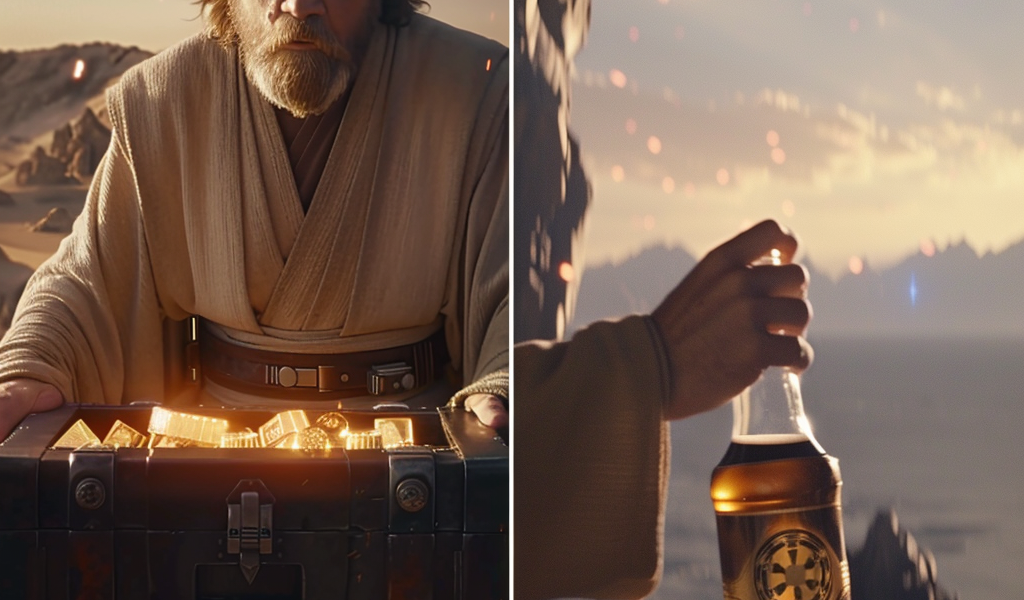In a surprising turn of events that has resurfaced from 2003, fans of the iconic Star Wars saga are left astounded upon discovering how an innovative yet controversial advertising strategy led to a legal confrontation between George Lucas and Chile’s channel 13. The broadcaster aired Cerveza Cristal beer commercials seamlessly edited into the Star Wars films, prompting legal action from Lucas.
During the December 2003 broadcasts of several Star Wars films, viewers were treated to an unconventional advertising strategy by channel 13 in collaboration with Cerveza Cristal, one of Chile’s most popular beer brands. Instead of traditional ad breaks, the channel inserted 30-second commercials directly into the movies. These ads were crafted to appear as continuations of the scenes they interrupted, integrating them so smoothly that they seemed to be part of the original films. One ad featured Obi-Wan Kenobi opening a chest to reveal a stash of Cerveza Cristal, complete with rock music and the brand’s logo, while another showed Emperor Palpatine pulling out a beer bottle instead of a lightsaber.
The discovery of these edits has elicited laughter and surprise among the Star Wars community, with some fans expressing a newfound interest in watching these uniquely altered versions of the films. This incident, however, was not taken lightly by Star Wars creator George Lucas. In 2004, Lucas filed a grievance with the Chilean Council for Self-Regulation and Advertising Ethics, leading to a judgment in Lucas Films’ favor. The council decreed that the commercials were not to be aired again. Despite this ruling, the channel and Cerveza Cristal partnered once more in 2004, embedding the beer into scenes from other popular movies like American Beauty, Notting Hill, and Gladiator.
This unusual intersection between advertising and cinematic content opens up discussions on the boundaries of creative advertising and the protection of artistic integrity. While the Cerveza Cristal commercials are remembered by some for their creativity and humor, they also serve as a cautionary tale about the potential for intellectual property rights to be infringed upon by overly ambitious marketing strategies. This incident reminds content creators and advertisers alike of the importance of respecting the boundaries of artistic works and the potential legal consequences of overstepping them.





